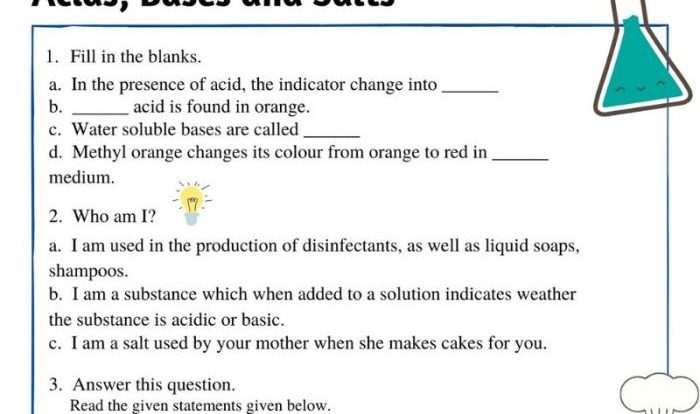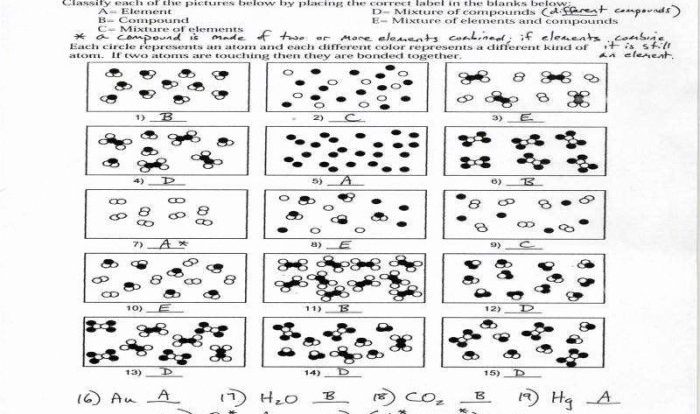Balancing chemical equations phet lab answer key – Balancing chemical equations is a fundamental skill in chemistry, allowing scientists to represent chemical reactions accurately. This guide provides a comprehensive overview of balancing chemical equations using the Phet Lab simulation, offering a step-by-step approach, practical examples, and applications.
The Phet Lab simulation is an interactive tool that helps visualize and understand the process of balancing chemical equations. By manipulating reactants and products, learners can gain a deeper understanding of the principles behind equation balancing.
Balancing Chemical Equations
Chemical equations are symbolic representations of chemical reactions that provide information about the reactants, products, and stoichiometry of the reaction. Balancing chemical equations is crucial in chemistry as it ensures that the number of atoms of each element on the reactants’ side matches the number of atoms of that element on the products’ side.
This reflects the law of conservation of mass, which states that matter cannot be created or destroyed in a chemical reaction.
The Phet Lab is an interactive simulation that provides a visual representation of chemical reactions and allows users to balance chemical equations by adjusting the coefficients in front of each reactant and product. The simulation offers a hands-on approach to understanding the process of balancing chemical equations and provides immediate feedback on the accuracy of the balanced equation.
Step-by-Step Guide to Balancing Chemical Equations, Balancing chemical equations phet lab answer key
Balancing chemical equations involves the following steps:
- Identify the unbalanced equation:Write the chemical equation with unbalanced coefficients.
- Count the atoms of each element on both sides:Determine the number of atoms of each element present on the reactants’ and products’ sides.
- Adjust coefficients:Start by balancing the element that appears in the most compounds. Adjust the coefficients in front of the compounds containing this element until the number of atoms of this element is the same on both sides.
- Repeat for other elements:Continue balancing the remaining elements one at a time, adjusting coefficients as necessary.
- Check the balance:Ensure that the number of atoms of each element is equal on both sides of the balanced equation.
Balancing Chemical Equations Using the Phet Lab
The Phet Lab simulation can be accessed at this link . It features a user-friendly interface with:
- Equation editor:Enter the unbalanced chemical equation and adjust coefficients.
- Atom counter:Displays the number of atoms of each element on both sides.
- Balancing tool:Automatically balances the equation by adjusting coefficients.
- Step-by-step mode:Guides users through the balancing process step by step.
To use the simulation, follow these steps:
- Enter the unbalanced equation into the equation editor.
- Click on the “Balance” button to automatically balance the equation.
- Alternatively, use the step-by-step mode to manually balance the equation.
- Check the atom counter to ensure the equation is balanced.
General Inquiries: Balancing Chemical Equations Phet Lab Answer Key
What is the purpose of balancing chemical equations?
Balancing chemical equations ensures that the number of atoms of each element on the reactants’ side matches the number of atoms of the same element on the products’ side. This reflects the law of conservation of mass, which states that matter cannot be created or destroyed during a chemical reaction.
How does the Phet Lab simulation help in balancing chemical equations?
The Phet Lab simulation provides a visual representation of chemical reactions, allowing learners to manipulate reactants and products to achieve a balanced equation. The simulation provides instant feedback, making it an effective tool for understanding the balancing process.
What are some common mistakes made when balancing chemical equations?
Common mistakes include changing the chemical formulas of reactants or products, adding or removing atoms, and not accounting for coefficients. It is important to follow the step-by-step process and check the equation carefully to avoid errors.

